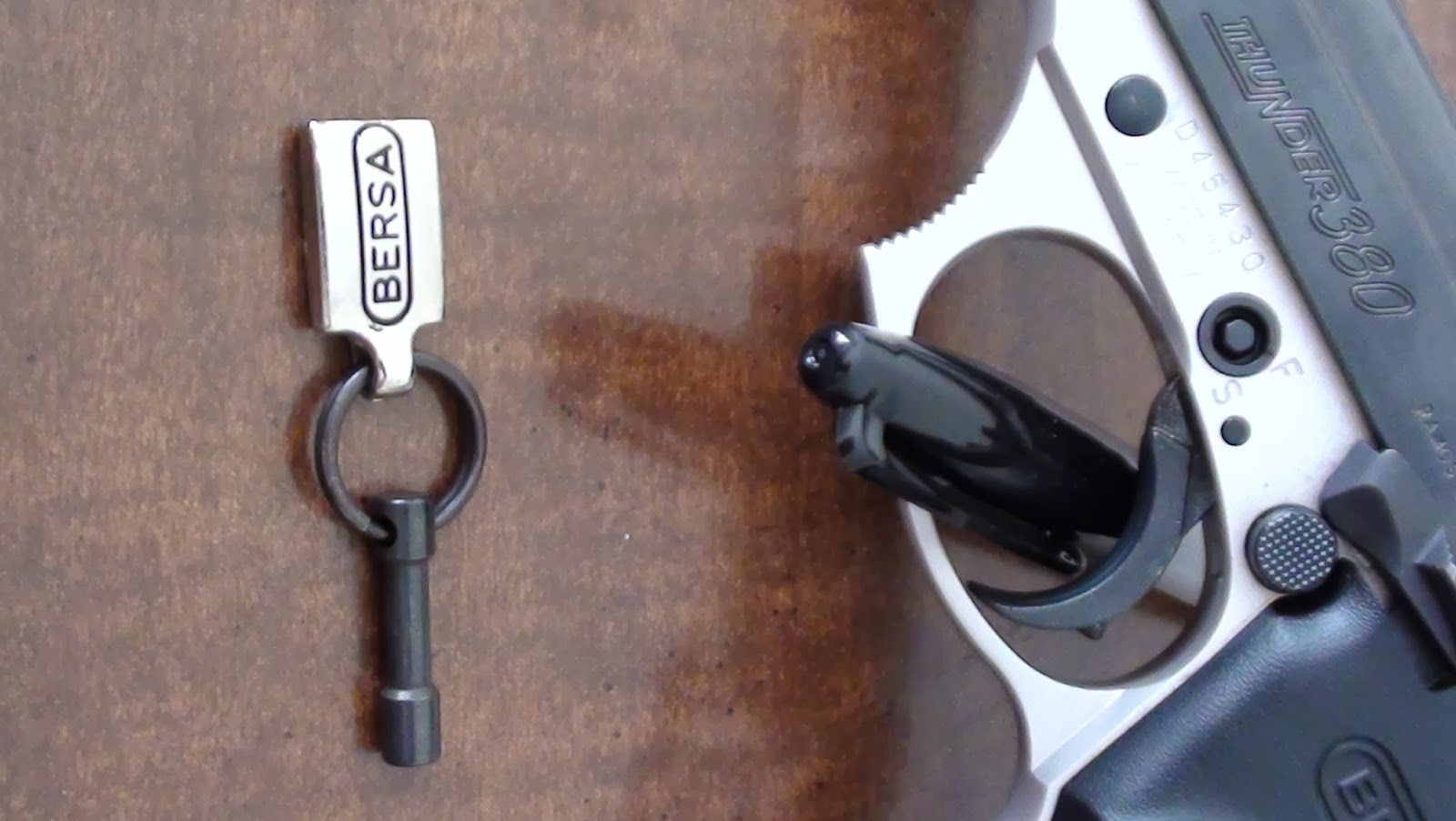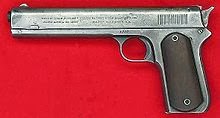Anyone who knows me knows that I am not a particular fan of Glock or even polymer frame pistols. I don't like the balance of weight and the feeling of the plastic. However, I am surprised every once in a while. That was the case with the Springfield XD series. It first happened not long after I bought my Hi Point C9. My good friend (who owns the gun in the picture) and I went shooting with a coworker of ours. Up to this point we only had experience with a Hi Point but the guy brought his Romanian AK and Springfield XD9 to the party. Out at the cold, snowy range in New Castle, IN, my buddy and I got a taste of the XD.
Compared to the Hi Point, which jammed every other round, the XD was a sweet piece. While, I was dead set on obtaining a Beretta 92, my buddy wanted to purchase an XD. The subject of this post is the Springfield XD40 that ended up in my friends hands. Let's do it to it.
The Springfield Armory, Inc. is not the actual designer of this pistol. If you jump across the ocean and next door to Italy, you will land in the country of Croatia. This is the home of the XD, or as it is known at home, the HS2000. Originally designed by the industrial company, I.M. Metal, as the PHP or Prvi Hrvatski Pištolj, translated as First Croatian Pistol. The initial design, despite being a solid one, had many quality control issues due to the Yugoslavian War and manufacturing difficulties. This did not stop Marko Vuković and his team from updating and improving the design, leading to the introduction of the HS95 in 1995 and later the HS2000 in 1999.
The HS2000 was found to be a very reliable sidearm and was thus adopted by the Croatian military and law enforcement, a role it still fills to this day. HS stands for Hrvatski Samokres or Croatian Pistol and the 2000 is, of course, celebrating the new millennium. The pistol found a following in the U.S. thanks to the importing efforts of HSAmerica and Intrac. It didnt last long though, as the U.S. arms company, Sprinfield Armory Inc., bought the rights to the imported pistols and rebranded them the XD series. XD is short for eXtreme Duty.
Initially the pistol was only available in the 9x19 Parabellum round, thus the designation "XD9". Since then, the gun has been designed for 3 calibers and 5 different cartridges with several lengths, colors and features. In this review, I will focus on the XD40 Service Model with the 4" barrel.
The Sprinfield Armory XD40 is a striker fired, short recoil operated, semiautomatic pistol in the mid-range .40 S&W cartridge. Striker fired means that, unlike traditional firearms, it has no actual hammer. The firing system is entirely internal and has a simpler mechanism compared to exposed or even internal hammer systems. Another benefit (or drawback, depending on how you look at it) of the striker fire action is the consistent weight of the trigger pull. With a double/single action, you have a very heavy initial pull and a very light pull every shot afterwards. In a crisis situation, consistency can be beneficial when the change in trigger weight can cause accuracy problems. The XD doesn't have a bad trigger, roughly a 5.5-7.7 pound pull according to factory specifications. I have linked a video from GlockWorld.com of a Glock striker fire action in action below. I apologize as I couldn't find an XD animation but this is as close as it gets.
The XD40 takes a 12 round stainless steel box magazine plus 1 round in the chamber. The gun has good ergonomics. The slide lock is easy to reach from a shooting stanceThere is checkering on the front and back of the grip, as well as the fore-end of the trigger guard for those with large hands. The grip also has contours for your thumb and index fingers as well as a very nice curve on the upper rear portion of the grip which protects your thumb web from slide bite. The slide has serrations on the front and back to satisfy any method of slide actuation. The frame also features an accessory rail to accommodate most underslung lights and lasers. You can even purchase bayonets for this kind of rail. You know, in case you want to go all Wesley Snipes in Blade and gut some vampires like a fish. Before I go off on a nerd tangent, the pistol features the ever popular dovetail, 3 dot sights which provide for good accuracy. It is easy to upgrade these sights to night sights if desired. The finish of the gun is excellent, with HS Produkt (the Croatian company that currently designs and builds the pistols) utilizing the Melonite finish which is a very hard (almost industrial created diamond hard) and very corrosion resistant material. For this reason, the XD series is a great weapon for carrying as the perspiration doesn't affect it. The gun comes in several colors, including black melonite, OD green, FDE and bi-tones as well with a nickel plated slide.
As for the safety features, despite not having manual safeties, the XD utilizes several active safeties to prevent accidental discharge. The first safety measures are the loaded chamber and striker pin cocked safety. In both cases, you can verify both visually and by feel. The top picture, below, shows the striker cocked indicator. It is the silver nub protruding out of the hole in the back of the slide. You can compare it with the photo of the sights above where the gun is not cocked. You can also see, in the bottom photo below, the chamber loaded indicator with the tab tilted up. Don't worry, I was using a snap cap for this demonstration.
Two more of the external safeties that you might notice are the grip and trigger safeties. The grip safety is very 1911A1-esque and the trigger safety is similar to what you see on a Glock. Both of these levers must be depressed to allow the weapon to be fired. These make the gun somewhat safer to carry with a loaded chamber as numerous pressure points must be pressed along with the trigger pulled to accidentally discharge the firearm. You can see both of these levers in the below images.
The last of the safeties is internal with the striker fire action. There is a firing pin block that prevents the gun from discharging accidentally when dropped or impacted. The block is removed only when the trigger is pulled.
Now, personally, I prefer a positive, manual safety. But all of this should definitely make you feel better about utilizing this firearm as a concealable weapon, particularly the XD(S) series. In fact, I almost passed up the Bersa Thunder 380 for a XD(S) in 45 ACP but I didn't have $500 and my preference lies in double/single actions with manual safeties.
Anyhow, moving along, before another tangent, I wanted to bring up another cool, and little known, feature of the XD series. This gun was designed, with this feature, to be a good scuffle gun or jam-it-in-someone's-gut gun. If you look at the front of the guide rod in the picture below, you will see the large, flat head that protrudes. This is a "muzzle protector" and it is meant to protect the slide from being unlocked when pressed against someone or something. The design of the gun does not allow the round to be fired unless full battery is achieved. Full battery means that the breech and slide are locked together to prevent any backfire and allow the gun to function properly. When the protector is pressed against, say, the back of a man becoming violent, it helps to keep the slide in place and allow for proper function. A note about the image: the barrel is farther back from the muzzle protector than in actuality due to the slide being locked. When the slide is in place, the protector still protrudes, just not as far.
The last thing we will go over is how to break the gun down for maintenance and cleaning. Before doing so, make sure that the gun is without a magazine and UNLOADED to prevent any accidental discharges. Taking the gun down is a very simple process, similar to a Sig Sauer P220 in some aspects. With the gun in the position shown above, with the slide locked back, find the takedown lever. It will be the lever just above and forward of the trigger. Rotate it counterclockwise to the 12 o'clock position. You will see the gap in the slide bevel that allows it to go through. I will show you how it should look in the pictures below.
Next, with the takedown lever in the up position, unlock the slide and let it move forward. The slide will not come off of the frame until the trigger is pulled to "decock" the firearm. Once you've pulled the trigger, the slide should come free of the frame.
From this position, you can separate the captive recoil spring from the slide. Simply press the guide rod forward, toward the muzzle, and lift it away from the slide. The barrel should also come free from the slide at this point. The pistol is now completely field stripped and ready to be cleaned after a long day at the range. If you want to see what that looks like, check it out below. You can see the striker mechanism in the bottom most picture.
The barrel in the top left picture. You can see the large locking lug on the bottom of the chamber, as well as the feed ramp. The recoil spring is a two spring, captive system that helps reduce muzzle climb and felt recoil, particularly towards the back end of the slide movement.
I'd say that this is near the end of the road for this edition of Blued Barrel. I have to say that the XD has appealed to my interests which is difficult for most polymer frame pistols. In addition to the XD40 Service model that I reviewed today, there are numerous other models to choose from. There is also the line of XD(S) pistols, a deep concealment "Slim" pistol in 9mm and 45. ACP, that I mentioned before as well as the XD(M) series, M is short for Match, built for competition shooting. In addition to these product lines, Springfield Armory runs a very popular Custom Shop that allows operators to outfit their firearms with all sorts of extra upgrades and features.
The XD is a very popular line of firearms for a reason. It is rugged, accurate and reliable; giving the revered Glock a run for its money. If you want an alternate choice for your polymer carry or duty pistol, I strongly suggest the Springfield XD40. You will not regret it!
Until next time, Remember: Don't go for the biggest, baddest gun in the grizzliest caliber available for self defense. When the chips are down, you want control just as much as power. Just another reason the humble 9mm is one of the most popular defense rounds, NOT the .500 S&W Magnum. (Even if it is fun as hell to shoot :) ) God Bless our America!































































